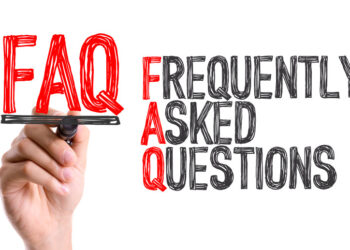
The pre-trial release process is a crucial aspect of the criminal justice system, enabling individuals to await trial outside of custody. Two common avenues for pre-trial release are cash bail and bail bonds. This essay provides an in-depth comparison of cash bail and bail bonds, exploring their definitions, mechanics, implications, and the broader discussions surrounding their use.
Understanding Cash Bail
Cash bail is a straightforward concept in which the defendant or their representative pays the full bail amount set by the court. It serves as a form of collateral to ensure the defendant’s appearance in court. If the defendant fulfills their court obligations, the cash bail is returned, minus any administrative fees. However, if the defendant fails to appear, the bail is forfeited.
Understanding Bail Bonds
Bail bonds, on the other hand, involve enlisting the services of a bail bondsman. The defendant or their representative pays a percentage of the total bail amount to the bondsman, who then guarantees the full bail amount to the court. This fee, known as the bail bond premium, is non-refundable. The bondsman may require collateral to secure the bond, and a co-signer assumes responsibility for the defendant’s appearance in court.
Comparing Mechanics and Implications
- Financial Requirements: Cash bail requires the full bail amount upfront, which can be challenging for many defendants. Bail bonds allow defendants to secure release by paying a fraction of the total bail amount.
- Risk and Responsibility: Cash bail is refunded upon fulfilling court obligations, while bail bonds involve non-refundable premiums. Co-signers in bail bonds assume responsibility for the defendant’s appearance.
- Equity and Socioeconomic Factors: Cash bail can disproportionately impact low-income individuals, leading to prolonged pre-trial detention. Bail bonds offer a more accessible option for those without the means to pay full bail.
- Bail Bondsmen’s Role: Bail bondsmen facilitate pre-trial release by offering financial support, but they operate for profit, which raises ethical concerns.
- Release Speed: Cash bail allows for immediate release upon payment, while bail bonds involve coordination with a bondsman.
- Legal Implications: Failure to appear in court can result in forfeiture of both cash bail and bail bonds, leading to legal consequences.
Broader Discussions and Reform
The use of cash bail and bail bonds has spurred discussions about justice, equity, and the impact of pre-trial detention. Critics argue that cash bail disproportionately affects marginalized communities and perpetuates socioeconomic disparities. As a result, many jurisdictions are exploring bail reform initiatives to address these concerns.
Balancing Liberty and Equity
The choice between cash bail and bail bonds shapes the experiences of individuals awaiting trial. While cash bail requires full payment upfront, bail bonds offer more accessible options by allowing partial payment through a bondsman. The implications of both approaches extend beyond financial aspects, impacting defendants’ freedom and legal outcomes. As the criminal justice system evolves, the ongoing conversation surrounding bail reform seeks to strike a balance between ensuring court appearances and promoting equity and fairness for all individuals involved.

Navigating Pre-Trial Release Options: Cash Bail and Bail Bonds in Focus
The pre-trial release phase is a pivotal juncture within the legal system, allowing individuals to maintain their freedom while their case progresses. Two prominent avenues for pre-trial release are cash bail and bail bonds. This essay embarks on a comprehensive comparison of these options, delving into their intricacies, implications, and implications for the justice system.
Decoding Cash Bail
Cash bail operates on a straightforward premise: the defendant or their representative pays the full bail amount determined by the court. This amount serves as collateral to ensure the defendant’s appearance at scheduled court hearings. Successful compliance with court obligations results in the return of the cash bail, minus any administrative fees. Non-compliance leads to forfeiture of the bail.
Decoding Bail Bonds
Bail bonds, a prevalent alternative, involve collaboration with a bail bondsman. The defendant or their representative pays a percentage of the total bail amount to the bondsman as the bail bond premium. The bondsman pledges the full bail amount to the court. Collateral, such as property or assets, might be required, and a co-signer assumes responsibility for the defendant’s appearance in court.
Comparing Mechanics and Implications
- Financial Flexibility: Cash bail necessitates immediate payment of the full bail amount, which can be financially burdensome. Bail bonds offer flexibility by allowing partial payment through a bondsman.
- Risk Distribution: Cash bail puts the onus of risk solely on the defendant, while bail bonds shift some risk to the bondsman and co-signer.
- Socioeconomic Dynamics: Cash bail’s upfront payment can disproportionately affect economically disadvantaged defendants. Bail bonds provide a more accessible avenue for release.
- Responsibility and Accountability: Co-signers in bail bonds assume legal responsibility for the defendant’s court appearances, influencing the decision-making process.
- Speed of Release: Cash bail enables immediate release upon payment, while bail bonds may involve coordination with a bondsman and the submission of collateral.
Broader Conversations and Reform Initiatives
The utilization of cash bail and bail bonds has spurred discussions about the equitable treatment of defendants and the potential for socioeconomic bias within the justice system. Many jurisdictions are reevaluating their approach to pre-trial release, recognizing the need for reform to address disparities.
The Quest for a Balanced System
In conclusion, the choice between cash bail and bail bonds reflects the multifaceted nature of pre-trial release. While cash bail demands immediate financial resources, bail bonds offer a more inclusive pathway through collaboration with a bondsman. Both avenues have implications that extend beyond financial considerations, affecting defendants’ liberty and the functioning of the justice system. The ongoing dialogue surrounding bail reform underscores the importance of equity, justice, and the pursuit of a balanced legal framework.























Discussion about this post